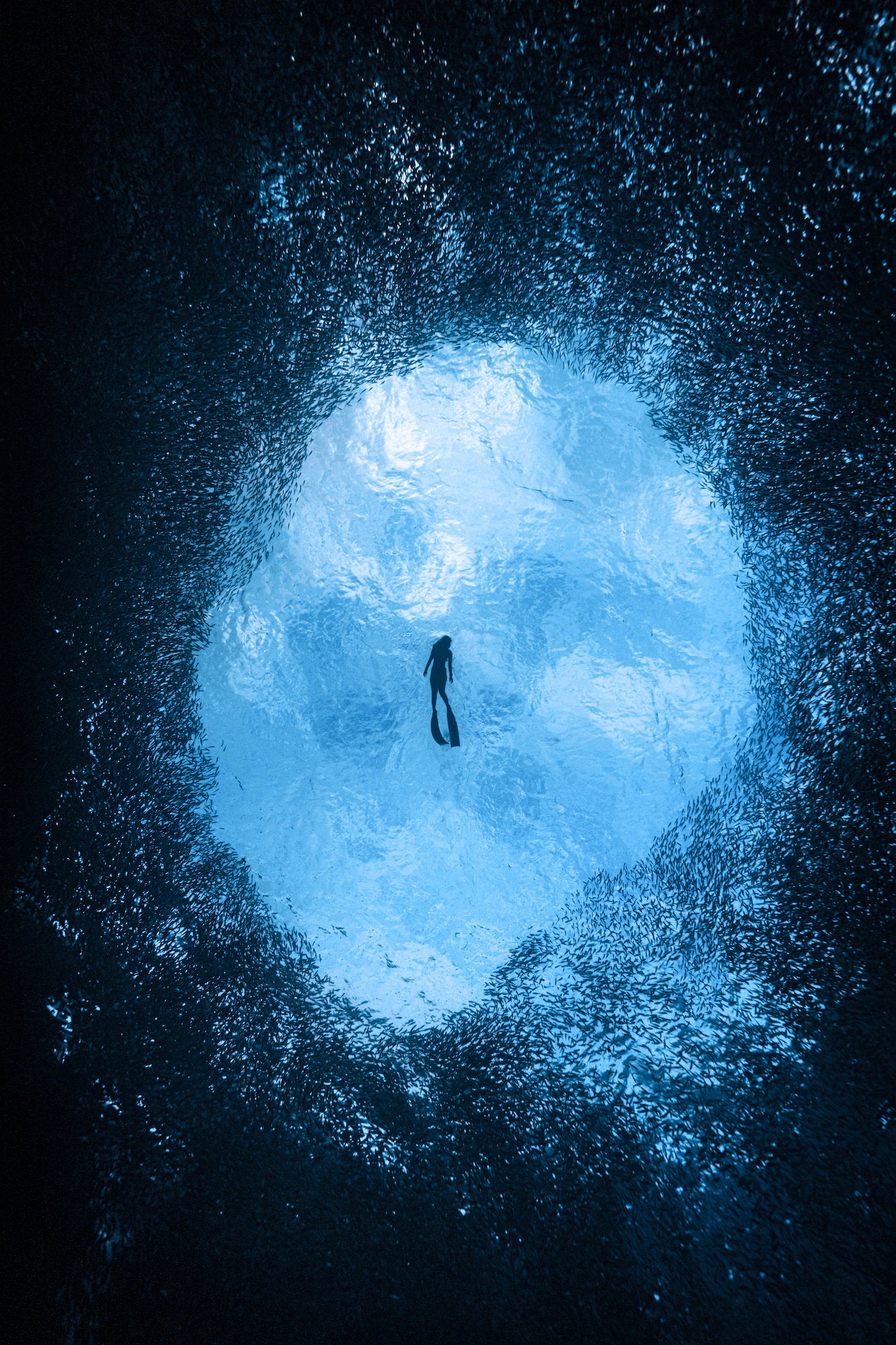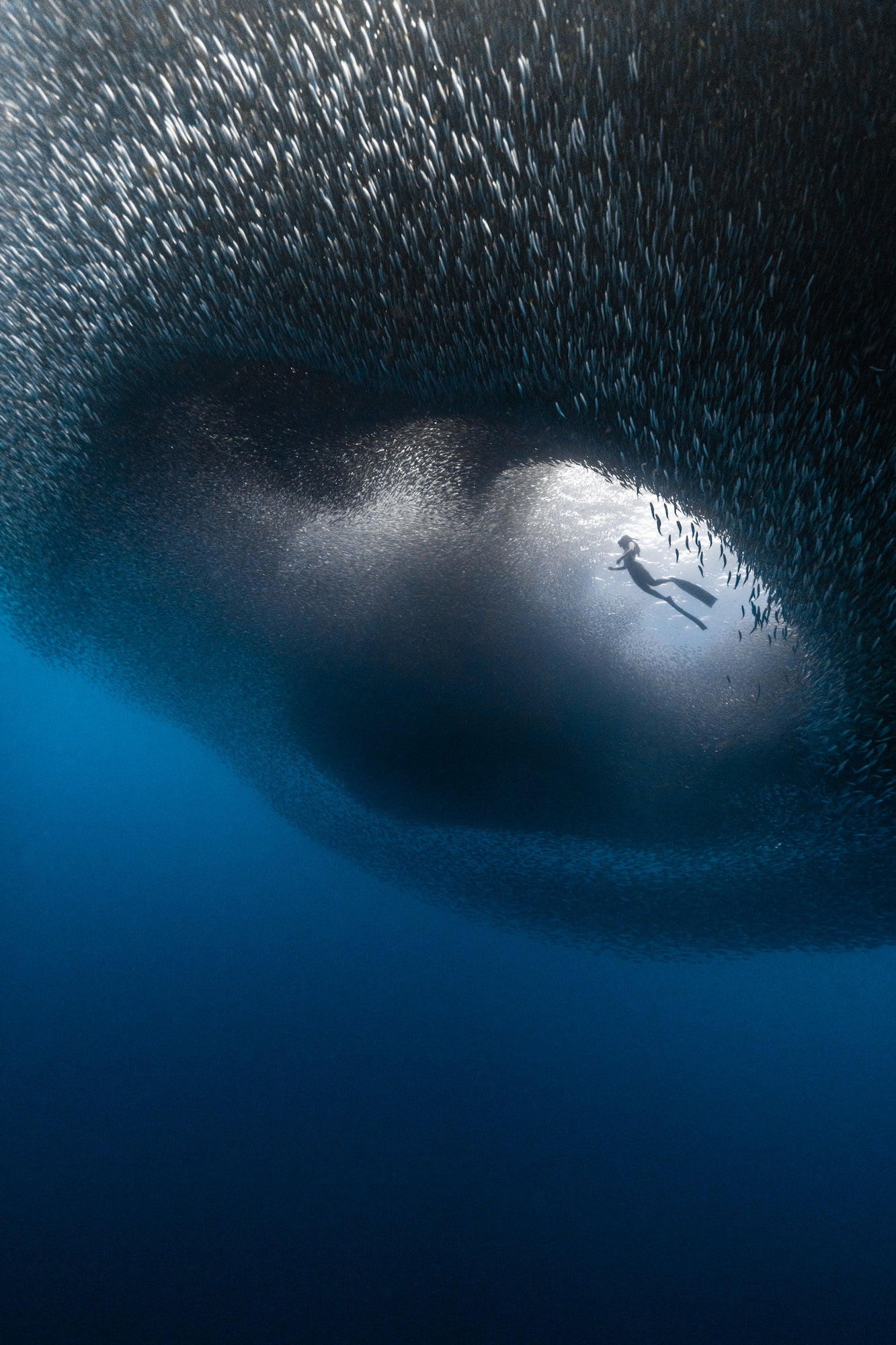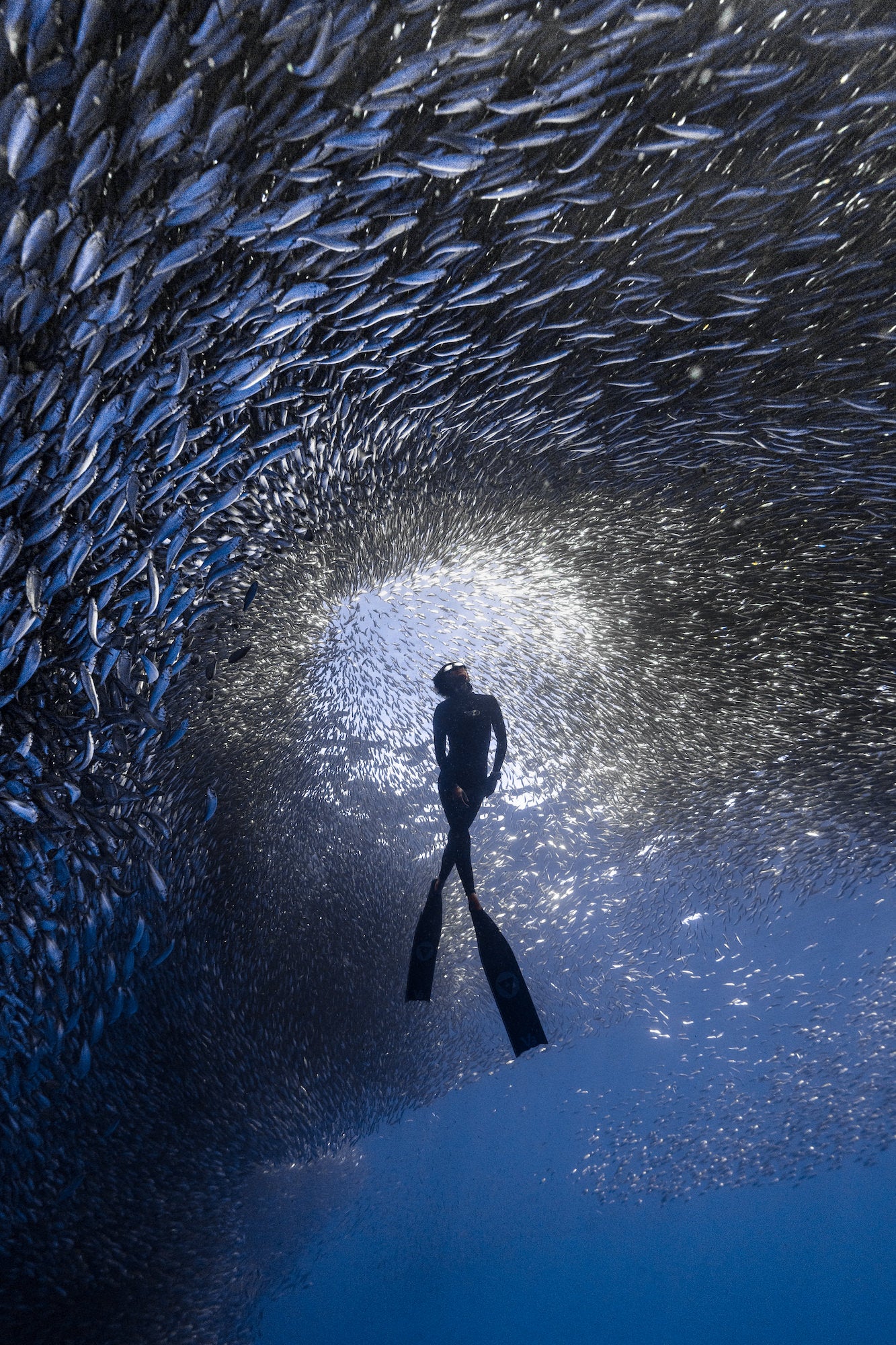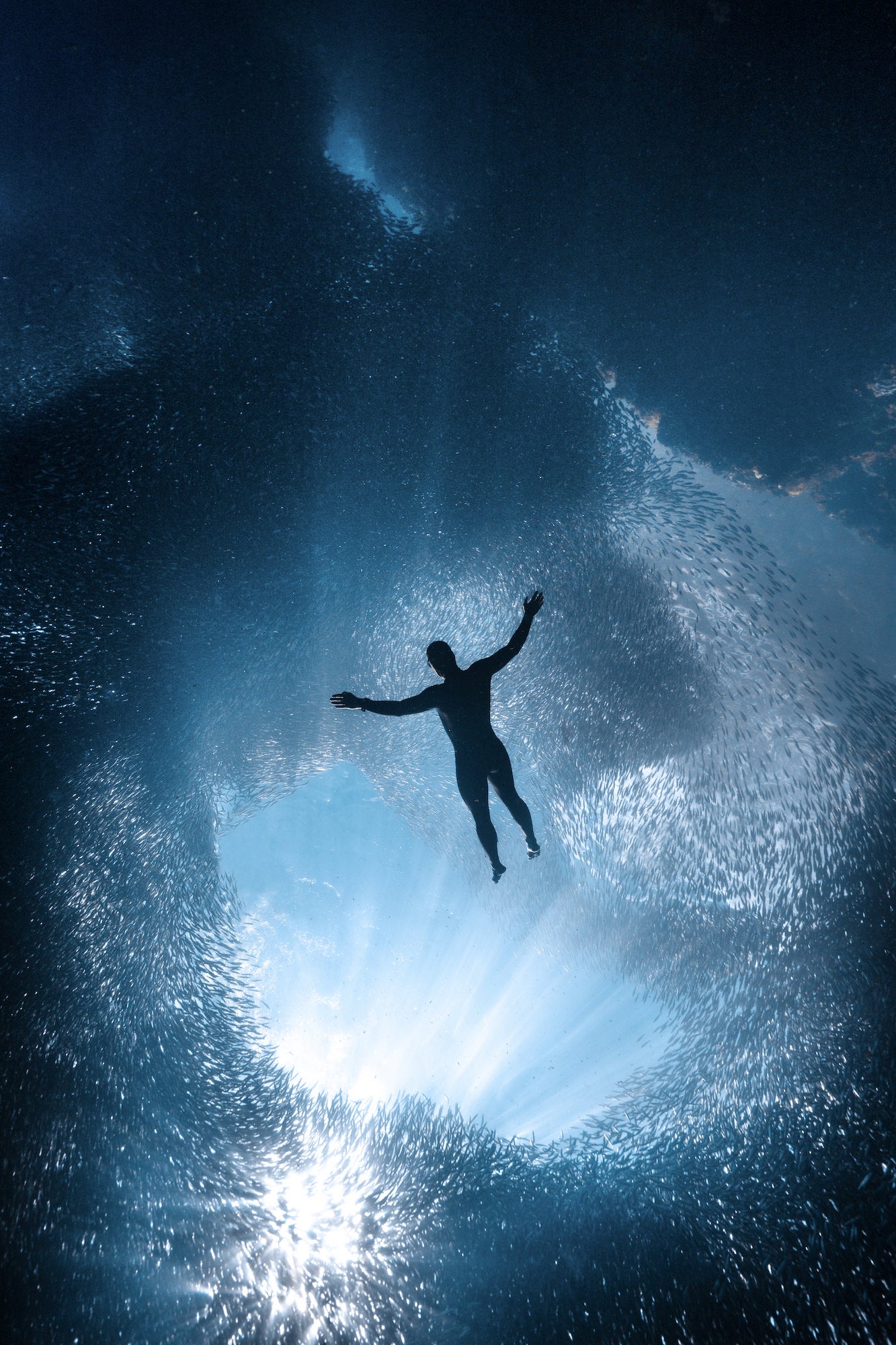Benjamín Yávar (@ben.freediver) is a passionate freediver and award-winning photographer from Chile. “My journey has been a blend of exploring the ocean’s depths and capturing the beauty of the natural world through my lens,” he says. “With a deep connection to nature, I’ve explored some of the world’s most mesmerizing underwater landscapes, pushing my own limits and embracing the wonders beneath the surface. Today, based in Panglao, Philippines, I continue to pursue both freediving and photography, sharing my passion with others while using my craft to inspire a deeper appreciation for the beauty of our planet.” We came across this incredible image of his, which was recently named a Finalist in the 2024 Ocean Photographer Of The Year Competition. We caught up with Yávar to learn more about how he was able to capture this split-second moment with his Sony Alpha gear. Keep reading as he shares his story behind the shot.
Product Preview – In This Article You’ll Find:
–Sony Alpha 7 IV
–Sony 12-24mm f/4 G
Photo by Benjamín Yávar. Sony Alpha 7 IV. Sony 12-24mm f/4 G. 1/250-sec., f/11, ISO 200
A Split-Second Mesmerizing Moment
I have been shooting in this area for the past few years, where cracks, swim-throughs, corals and tropical fish are part of the everyday dive. For this photo, I got incredibly lucky. I’ve always wanted to capture this kind of perspective but never quite nailed it. Sardine runs are unique. Their movements are so radical that they can form incredible shapes in just a fraction of a second—blink, and it’s gone.
Photo by Benjamín Yávar. Sony Alpha 7 IV. Sony 12-24mm f/4 G.
On this dive, I had no specific shots in mind. I went for a fun dive with my girlfriend, Jay, bringing my camera along, as I always do, with no expectations. The sardine school was juvenile and spread out in an unusual way, covering a large layer just a meter from the surface. I dove down, holding my breath at around 12 meters, and looked up. There it was—the most mesmerizing moment. The sardines formed an almost perfect vortex, swimming in perfect harmony, and Jay was looking down, completely immersed in this spectacle. And then, click! That moment was captured forever.
The Ideal Underwater Setup
For this shot, I used my Sony Alpha 7 IV paired with the Sony 12-24mm f/4 G zoom lens. I chose the Sony Alpha 7 IV because it offers the perfect balance between photo and video capabilities, allowing me to switch seamlessly between both without sacrificing quality. This versatility is essential during dynamic underwater shoots, and the dual card slots provide extra security, ensuring my work is always backed up.
What I love about the Sony 12-24mm f/4 G lens is its incredible versatility. The wide-angle range allows me to capture expansive scenes, making it perfect for the vast underwater landscapes I often work with. But if I need to get closer to my subject, a simple twist of the zoom lets me do just that, without sacrificing detail. This flexibility is crucial when dealing with fast-moving subjects like sardines, where I need to adapt quickly to capture the perfect moment. The combination of this camera and lens makes it the ideal setup for my underwater photography.
Photo by Benjamín Yávar. Sony Alpha 7 IV. Sony 12-24mm f/4 G.
Photographing A Sardine Vortex With Crisp Detail
For this shot, my camera settings were ISO 200, f/11, 1/250-sec at 12mm. I wasn’t expecting to capture this image when I went down for the dive, so I had my camera in energy-saving mode, which automatically shuts down after 10 seconds of inactivity. With just a click of a button, it turns back on, ready to shoot.
As I looked up to take the shot, I realized my aperture was set to f/5.6, as I had been shooting close-ups at the surface earlier. Knowing I needed everything in the scene to be on focus, I quickly adjusted it to f/11. That change ensured that I captured the full depth of the sardine vortex with crisp detail.
I used underwater housing with a glass dome port, which helps achieve better image quality by reducing distortion and maintaining sharpness across the frame. This setup allowed me to focus entirely on capturing the perfect moment.
Post-Processing For Underwater Imagery
Underwater photography always requires post-processing due to how water affects light and color. Water absorbs certain wavelengths, causing reds, yellows, and oranges to disappear first, resulting in images that often look blue or green, even at shallow depths. Additionally, water scatters light, reducing contrast and sharpness.
Photo by Benjamín Yávar. Sony Alpha 7 IV. Sony 12-24mm f/4 G.
For this shot, I used Lightroom for post-processing and also Photoshop for fine tuning and cleaning the image from any imperfections. I adjusted the white balance to correct the color cast and restore the natural hues of the scene. I also enhanced contrast to bring out the details in the sardine vortex and fine-tuned the sharpness to emphasize the movement of the fish. Shooting in RAW allowed me more flexibility in post-processing, making it easier to correct any issues caused by underwater lighting conditions. The edits were subtle but essential in bringing the image closer to what I saw in that magical moment beneath the surface.
See more of Benjamín Yávar’s work on Instagram @ben.freediver.





















